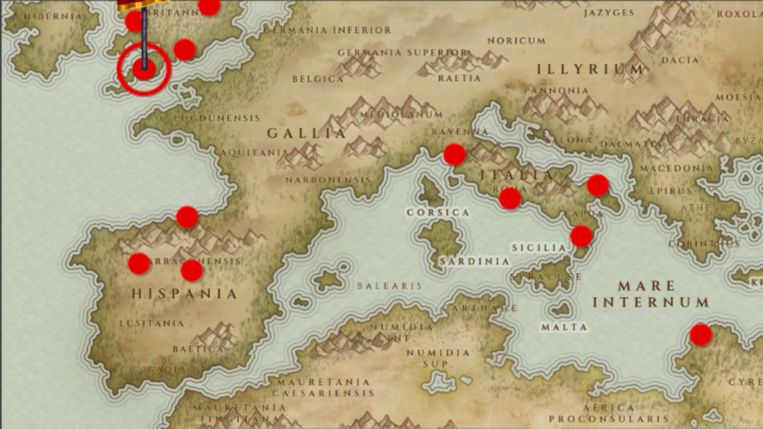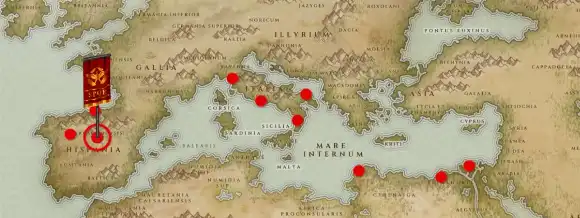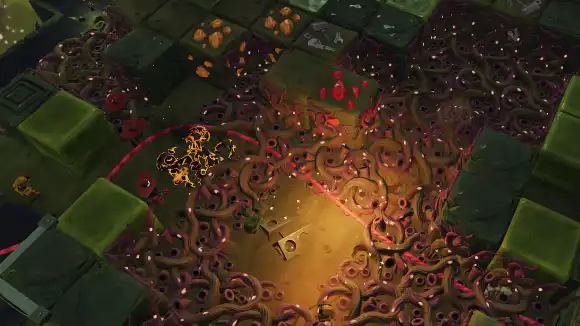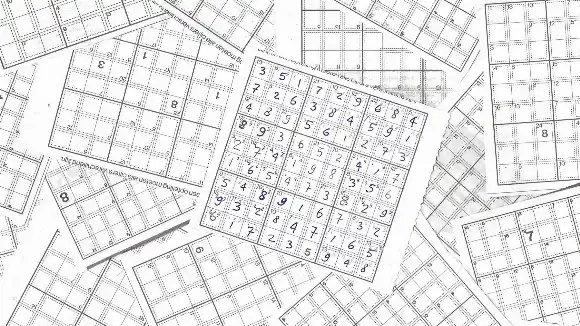
In this article
Getting started is often the most difficult thing to do in a new game. Especially when your goals are not immediately clear from the start.
In SteamWorld Build, getting a new game afoot isn't really rocket science. You'll get to that later on 😉
TL;DR: a list of buildings
What will be building today? Here's the list!
- 20 Worker Residences
- 1 General Store
- 2 Foresters
- 1 Lumbermill
- 1 Service Shop
- 1 Cactus Farm with 3 Fields
- 1 Warehouse
- 1 Charcoal Kiln
- Repaired Train Station
Step 1: housing and general store
The first step to raising a successful SteamWorld Build village, is by building houses. Workers will move in as soon as you build 6 Worker Residences.
But, these residences need to meet basic 3 requirements:
- They need to be connected to a road; and
- That road needs to be connected to the trainstation; and
- They need to be in the vicinity of a General Store.
After building the first 6 houses, build a General Store to have the first 4 workers per residence move in. That gives you 24 workers, which is enough to meet the first milestone and gets you onto the next step.
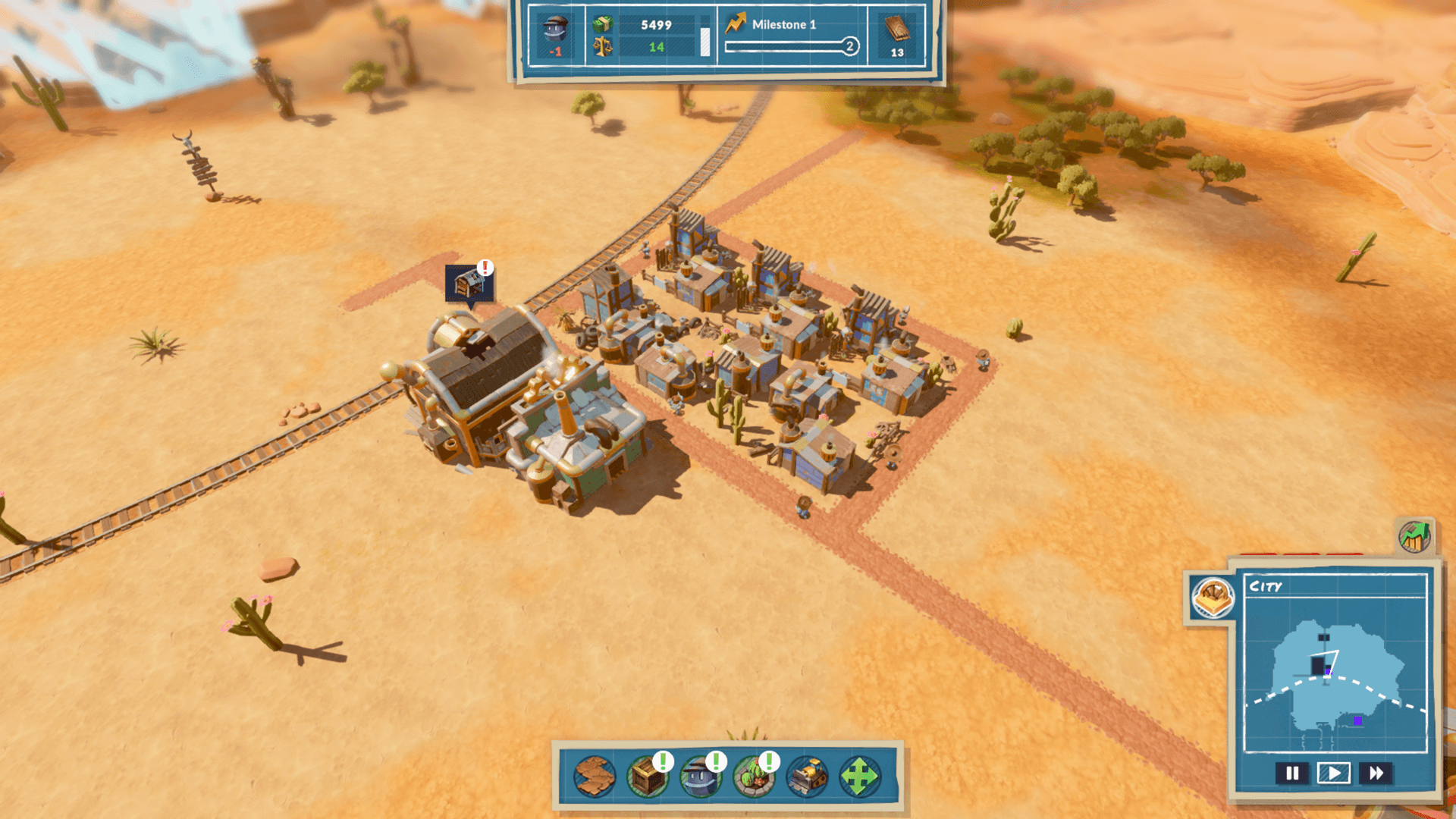
A simple set up with a non functioning Train Station, 6 Worker Residences and a General Store in SteamWorld Build
Don't repair the Trainstation
Now, for your village to grow, you don't actually need to repair the trainstation just yet. Just being connected to it via road is enough for your first workers to move in.
So save yourself the resources and hang back a bit until you need the Trainstation fully active.
Step 2: basic resources, service shop and more houses
With your first Workers in the village, you can set up your first resource production chain: felling trees to get Logs and turning them into Boards.
Boards are used to build new buildings and are therefor one of the most important resources you'll need to keep your eye on during gameplay. Not having enough boards available will definitely hold you back in your village development!
Build 1 Forester close to the trees. Be sure to keep an eye on the production percentage when placing the building!
Next, place a Lumbermill close by. You could build it further away and work with Warehouses, but you're better off waiting a little bit. A warehouse costs 4 boards, which is a lot at the moment.
With the Board-production set up, it's time to build a Service Shop. It's the red wrench tool icon, you'll find it in the Workers category.
By now, you still should have enough Boards (12) to build another 6 Worker Residences. You'll need these to be able to advance to the next step.
There is a series of walkthrough guides about SteamWorld Build. Here's the list:
- Part 1: Workers
- Part 2: Engineers
- Part 3: Dusty Caverns
- Part 4: stay tuned!
Vicinity of buildings
Are your Workers not happy in their residences? Are they complaining about the lack of Service Shop access, even though you built one?
This probably means the Service Shop is not close enough to the residence. You can check if the radius or range is sufficient by selecting the Service Shop.
Once selected, you'll see a part of your road network light up. These parts of road have access to the selected building. Residences not connected to a piece of road that's lit up, do not have access to the shop.
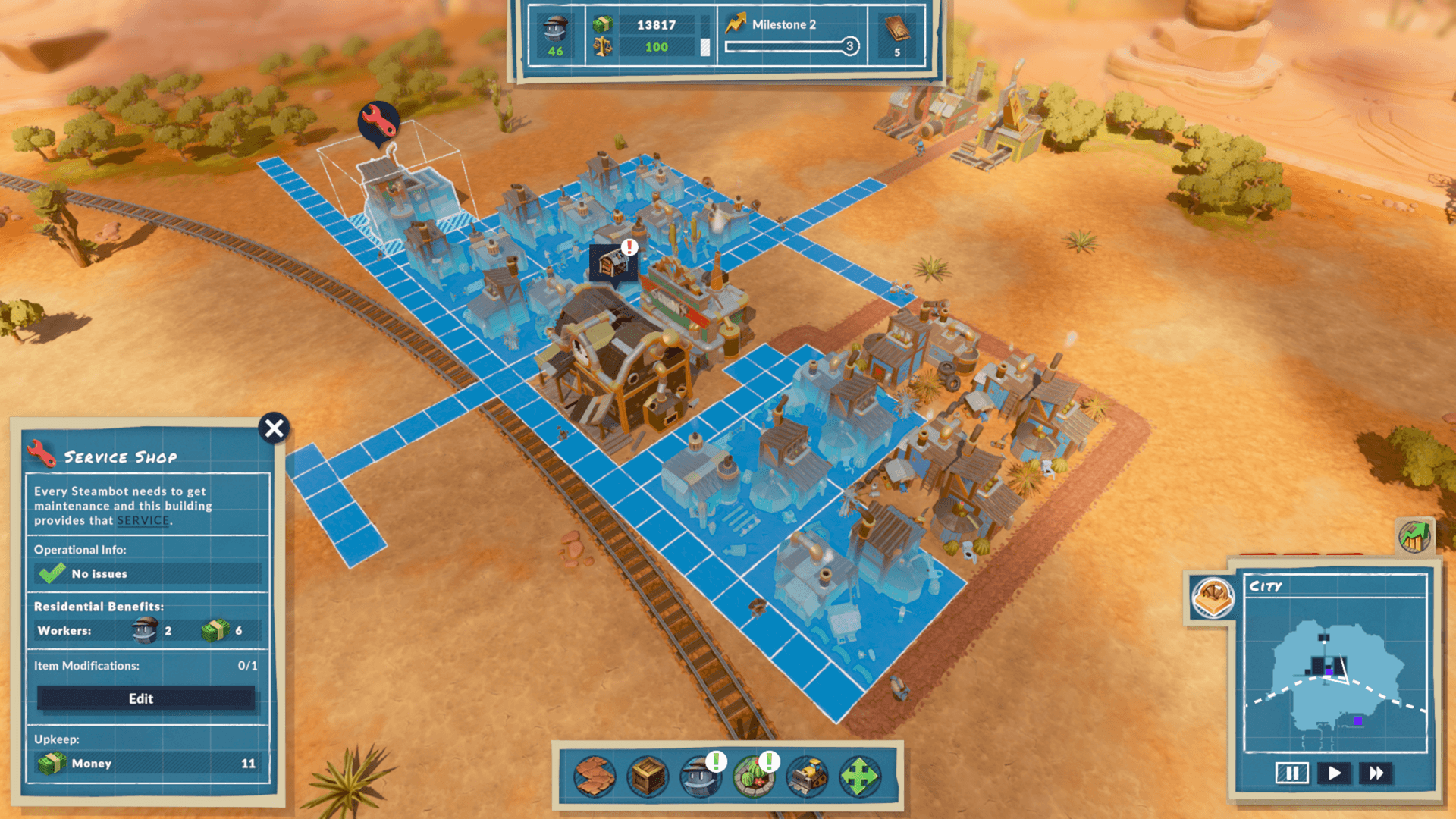
A Service Shop only has a small service range. Unselected road tiles are not connected and won't provide coverage to residences.
Keep this in mind when building your residences and especially service buildings like the General Store and Service Shop. The same is true for production buildings and warehouses by the way, so remember this when taking the next step!
Step 3: cactus farms and a warehouse and even more houses
A new need and buildings have been unlocked by now. The Cactus Farm will provide your Workers with Cactus Water.
To build the farm, place the building somewhere with a bit of space around it. Why? Well, you'll need to build actual Cactus Fields for the farm to work!
The farm building itself needs a 4x3 space and requires 3 farm fields, each 3x3. You can place them whereever you want, as long as they're connected to the farm building either directly or by touching another field.
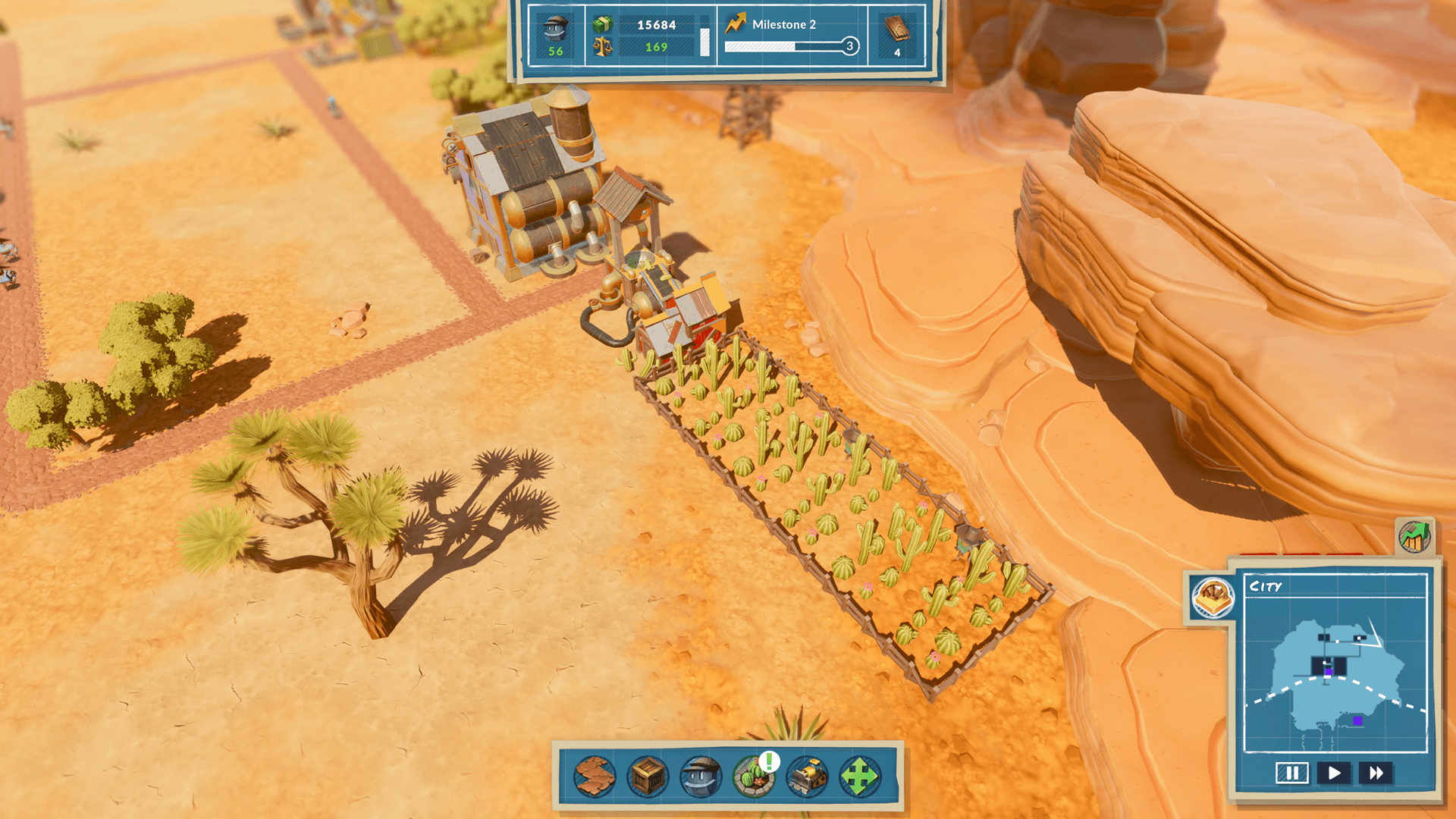
A Cactus Farm with 3 fields in a row. Across the road, a Warehouse ready to pick up the produced goods.
It's also a good time to build a Warehouse. The Cactus Farm produces Cactus Water, which needs to be stored in a Warehouse for it to be able to be distributed to the Workers. And seeing as you don't want to have a Cactus Farm in the middle of your residential disctrict (people might hurt themselves!), you'll need a Warehouse to ship the Water places.
You'll need 3 more Worker Residences to complete this step, bringing the total to 15. Once they're built and occupied, it's time to move on!
Step 4: Charcoal, houses and trainstation (finally!)
With your Workers supplied with Cactus Water, they now need Charcoal to keep their residences powered.
Charcoal is a product of burning Logs in the Charcoal Kiln. The same logs as are turned into Boards by a Lumbermill.
This means you either need to pause your Lumbermill, or build another Forester. At this point in the game, building another Forester is your best bet. You're going to need a lot more Boards going forward, so pausing the Lumbermill would be a bad decision.
By now, your Workers finally need access to a working Train Station to be fully satisfied. So go on, select that Train Station and click the repair button.
It will trigger a cut scene and open up trading possibilities. Great if you need boards some extra boards or to sell of those excess logs. The trader will arrive every 5 minutes, with a timer showing above the minimap to let you know how long it will take before he'll arrive.
To finish this step, build 5 extra houses to bring the total up to 20 Worker Residences. If all of them are fully supplied with the needs and access to the General Store and Service Shop, you'll have 200 Workers. This will open up the next step, Engineers!
Production times
You may have noticed that production buildings, like the Forester, Lumbermill and Charcoal Kiln, have their own production time. This is the time it takes for the building to produce 1 of their goods.
For a Forester, this is 15 seconds. Every 15 seconds, 1 Log is produced.
For a Lumbermill, this is also 15 seconds. Every 15 seconds, 1 Log is turned into 1 Board.
Basic math and time management skills will teach us that as these times are the same, 1 Forester can supply 1 Lumbermill with a steady supply of products to work with.
However, a Charcoal Kiln takes 30 seconds to burn a Log into Charcoal. In 30 seconds, 1 Forester will bring 2 Logs to the Kiln. But the Kiln will only use 1.
Of course, that means that 1 Forester will be enough to supply 2 Charcoal Kilns with enough Logs to burn into Charcoal.
Or, if you only have 1 Charcoal Kiln, the excess logs will be stored in the Warehouse until someone needs them.
You can improve production times by using items, but that's something for a later post.
Onwards, buttercup!
Right now, you should have a pretty much self sustaining town. You'll have a steady production of the basic needs of Workers as well as building materials.
As well as that, you'll have a positive money balance of, depending on the settings, about 400-450.
This means it's time to start upgrading Worker Residences to Engineer Residences. You'll open up new buildings, new milestones and new gameplay mechanics.
In part 2 of this series, I'll walk you through this part of the game too!
